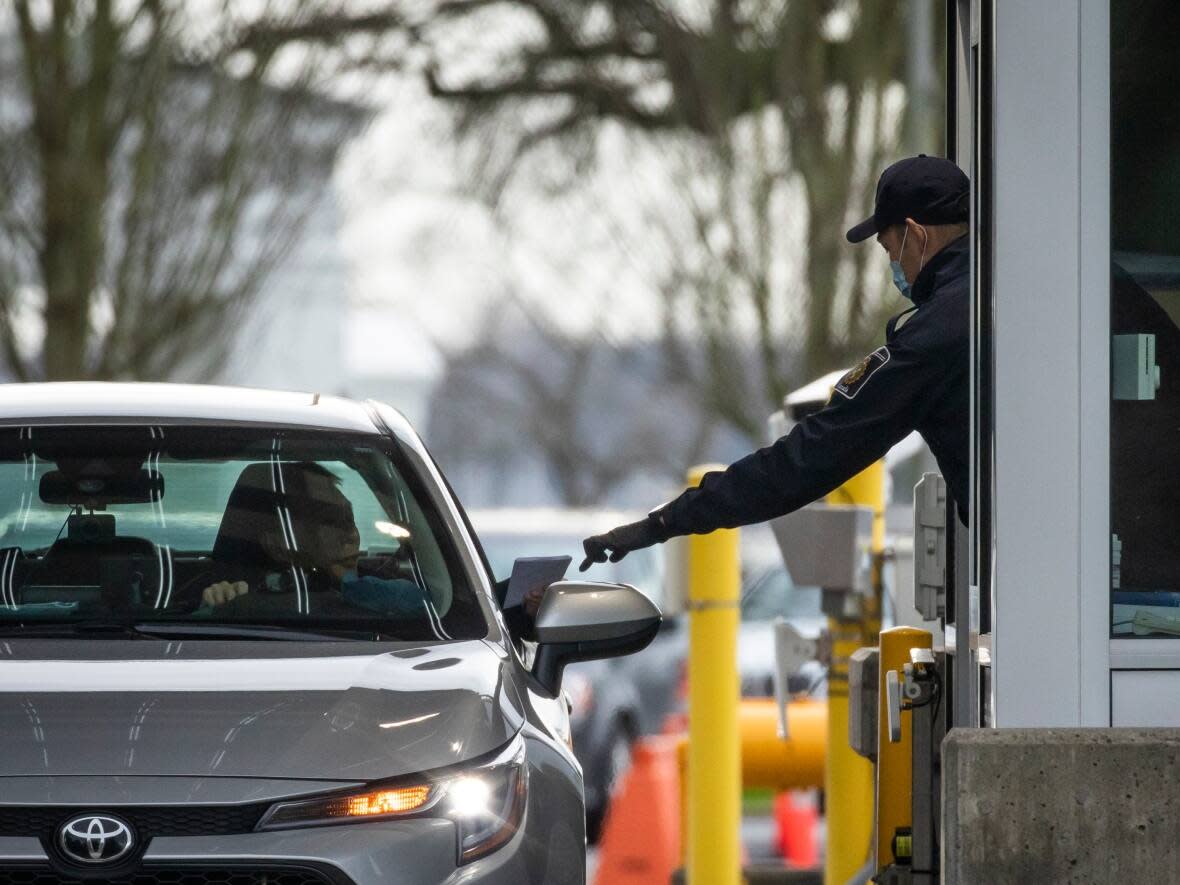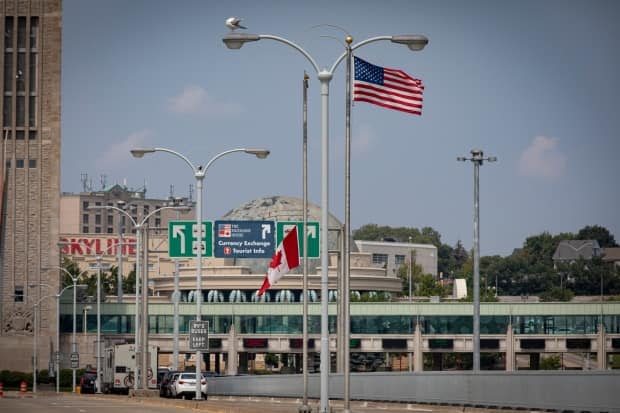'Flagpoling' limited at 12 U.S.-Canada border crossings

Flagpoling, when a non-Canadian with a temporary status leaves Canada and re-enters within 24 hours to get same-day immigration services at the border, is facing new limitations at the borders.
The process is a workaround that can let people skip the long wait times associated with applying online — and it's completely legal.
It can be done at any point of entry but is generally done at land border crossings. In many cases, there is a spot indicated by flagpoles where a person can turn around on the other side of the crossing, which is where the practice gets its name from.
The Canada Border Services Agency (CBSA) lists flagpoling on its website as an alternative to applying for immigration paperwork online, although it advises against it, warning that "you may find long lineups and your turn may not come before the end of service hours."
WATCH | What is flagpoling?
Now, the process is facing pushback on both sides of the border. Limits on where and when flagpoling is allowed are now in effect.
Starting May 30, CBSA began curtailing the days of the week and the hours it offers flagpoling services at 12 of the most popular crossings across the country.
In a statement to CBC News, the CBSA said that it's making the change to increase efficiency during peak travel times and to allow officers to focus on other priorities such as trade facilitation, high-risk travellers, and asylum seekers.
WATCH | Why Canadian and U.S. authorities are limiting 'flagpoling':
"Flagpoling takes up significant resources at the border, diverts Canadian and American officers away from enforcement activities and contributes to significant wait times for cross-border travellers," the statement read.
The affected crossings are listed below, and schedules with opening hours are available on the CBSA website:
Quebec
Armstrong
Saint Armand/Philipsburg
Saint Bernard-de-Lacolle
Stanstead Route 55
Ontario
Fort Erie (Peace Bridge)
Niagara Falls Rainbow Bridge
Queenston-Lewiston Bridge
B.C.
Abbotsford-Huntingdon
Aldergrove
Boundary Bay
Douglas
Pacific Highway
Criticism from U.S.
On the other side of the border, flagpoling has frustrated U.S. Senate Majority Leader Chuck Schumer.
He wants the Canadian government to shut down what he calls an immigration "loophole," saying it's having a negative impact on the economy.

"It's putting the Niagara Falls and western New York economy at risk by increasing traffic and wait time here at the border, hampering smooth commerce … [and] tourism," Schumer said during a Tuesday news conference.
Schumer alleged that "thousands" of people in Canada use the workaround every month. CBSA did not reply to CBC's query about how many people use the process.

3-month wait times
Kim Ly, vice-chair of the Canadian Association of Professional Immigration Consultants (CAPIC), said there are risks to flagpoling.
By going in-person to apply for a study or work permit at the border, an applicant is "asking for an immigration officer to render their decision right there and then."
And if the applicant doesn't have the right paperwork, or doesn't answer questions appropriately, they can be denied the documents and possibly deported, Ly said.

According to Immigration, Refugees and Citizenship Canada (IRCC), reapplying online for a work or study permit from within Canada carries an average wait time of three months.
Ly said that applying online allows a person to consult an advocate and to reapply if they're refused.
Although risky, Ly said getting same-day immigration documents is sometimes necessary.
"The example of that could be that a company can't wait the 60 to 90 days for IRCC to process the application in order for the worker to start working … that's the reason why people do it," she said.
Ly said there's no doubt that flagpoling increases traffic at crossings, but that limiting the processing hours won't change the demand, and therefore isn't the best solution.
In an emailed statement to CBC News, IRCC said it encourages people to apply for immigration papers from within Canada, and noted that in some circumstances there are ways to submit priority applications online for work permits.
Furthermore, the IRCC website states that if a person's current permit expires while they are waiting for their new one to be processed, they can continue to work or study as they will have "maintained status."


